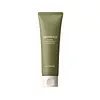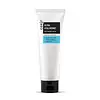What's inside
What's inside
 Key Ingredients
Key Ingredients

 Benefits
Benefits

 Concerns
Concerns

 Ingredients Side-by-side
Ingredients Side-by-side

Phormium Tenax Root Extract 67%
Skin ConditioningGlycerin
HumectantMethyl Trimethicone
Skin ConditioningButylene Glycol
HumectantVegetable Oil
Skin ConditioningTrehalose
HumectantWater
Skin Conditioning1,2-Hexanediol
Skin ConditioningCeramide NP
Skin ConditioningPhytosphingosine
Skin ConditioningVitis Vinifera Seed Oil
EmollientRibes Nigrum Seed Oil
EmollientCalendula Officinalis Flower Extract
MaskingRibes Nigrum Fruit Extract
AstringentPhormium Tenax Extract
Skin ConditioningPhormium Tenax Seed Oil
Skin ConditioningHelianthus Annuus Seed Oil
EmollientSodium Hyaluronate
HumectantMelia Azadirachta Leaf Extract
Skin ConditioningMelia Azadirachta Flower Extract
Skin ConditioningCoccinia Indica Fruit Extract
Skin ConditioningAloe Barbadensis Flower Extract
EmollientSolanum Melongena Fruit Extract
Skin ConditioningPortulaca Oleracea Extract
Skin ConditioningSimmondsia Chinensis Seed Oil
EmollientOcimum Sanctum Leaf Extract
Skin ConditioningCurcuma Longa Root Extract
MaskingCorallina Officinalis Extract
Skin ConditioningHippophae Rhamnoides Oil
EmollientJojoba Esters
EmollientAmmonium Acryloyldimethyltaurate/Beheneth-25 Methacrylate Crosspolymer
Emulsion StabilisingPalmitic Acid
EmollientStearic Acid
CleansingHydroxyethyl Acrylate/Sodium Acryloyldimethyl Taurate Copolymer
Emulsion StabilisingAcrylates/C10-30 Alkyl Acrylate Crosspolymer
Emulsion StabilisingArginine
MaskingXanthan Gum
EmulsifyingDisodium EDTA
Sorbitan Isostearate
EmulsifyingHydrogenated Lecithin
EmulsifyingMyristic Acid
CleansingTocopherol
AntioxidantParfum
MaskingPhormium Tenax Root Extract 67%, Glycerin, Methyl Trimethicone, Butylene Glycol, Vegetable Oil, Trehalose, Water, 1,2-Hexanediol, Ceramide NP, Phytosphingosine, Vitis Vinifera Seed Oil, Ribes Nigrum Seed Oil, Calendula Officinalis Flower Extract, Ribes Nigrum Fruit Extract, Phormium Tenax Extract, Phormium Tenax Seed Oil, Helianthus Annuus Seed Oil, Sodium Hyaluronate, Melia Azadirachta Leaf Extract, Melia Azadirachta Flower Extract, Coccinia Indica Fruit Extract, Aloe Barbadensis Flower Extract, Solanum Melongena Fruit Extract, Portulaca Oleracea Extract, Simmondsia Chinensis Seed Oil, Ocimum Sanctum Leaf Extract, Curcuma Longa Root Extract, Corallina Officinalis Extract, Hippophae Rhamnoides Oil, Jojoba Esters, Ammonium Acryloyldimethyltaurate/Beheneth-25 Methacrylate Crosspolymer, Palmitic Acid, Stearic Acid, Hydroxyethyl Acrylate/Sodium Acryloyldimethyl Taurate Copolymer, Acrylates/C10-30 Alkyl Acrylate Crosspolymer, Arginine, Xanthan Gum, Disodium EDTA, Sorbitan Isostearate, Hydrogenated Lecithin, Myristic Acid, Tocopherol, Parfum
Water
Skin ConditioningAlcohol
AntimicrobialButylene Glycol
Humectant1,2-Hexanediol
Skin ConditioningSodium Hyaluronate
HumectantAloe Barbadensis Leaf Extract
EmollientPrunus Avium Fruit Extract
Skin ConditioningMangifera Indica Fruit Extract
Skin ConditioningLitchi Chinensis Fruit Extract
Skin ConditioningPanax Ginseng Root Extract
EmollientCamellia Sinensis Leaf Extract
AntimicrobialHoney
HumectantRosa Multiflora Fruit Extract
MaskingGardenia Florida Fruit Extract
Skin ConditioningScutellaria Baicalensis Root Extract
AstringentLigustrum Japonicum Fruit Extract
Skin ConditioningTriethanolamine
BufferingCarbomer
Emulsion StabilisingAcrylates/C10-30 Alkyl Acrylate Crosspolymer
Emulsion StabilisingXanthan Gum
EmulsifyingEthylhexylglycerin
Skin ConditioningParfum
MaskingWater, Alcohol, Butylene Glycol, 1,2-Hexanediol, Sodium Hyaluronate, Aloe Barbadensis Leaf Extract, Prunus Avium Fruit Extract, Mangifera Indica Fruit Extract, Litchi Chinensis Fruit Extract, Panax Ginseng Root Extract, Camellia Sinensis Leaf Extract, Honey, Rosa Multiflora Fruit Extract, Gardenia Florida Fruit Extract, Scutellaria Baicalensis Root Extract, Ligustrum Japonicum Fruit Extract, Triethanolamine, Carbomer, Acrylates/C10-30 Alkyl Acrylate Crosspolymer, Xanthan Gum, Ethylhexylglycerin, Parfum
Ingredients Explained
These ingredients are found in both products.
Ingredients higher up in an ingredient list are typically present in a larger amount.
1,2-Hexanediol is a synthetic liquid and another multi-functional powerhouse.
It is a:
- Humectant, drawing moisture into the skin
- Emollient, helping to soften skin
- Solvent, dispersing and stabilizing formulas
- Preservative booster, enhancing the antimicrobial activity of other preservatives
Acrylates/C10-30 Alkyl Acrylate Crosspolymer is a synthetic polymer. It is used to thicken and improve the texture of products. Due to its properties, it can prevent water and oil ingredients from separating.
Butylene Glycol (or BG) is used within cosmetic products for a few different reasons:
Overall, Butylene Glycol is a safe and well-rounded ingredient that works well with other ingredients.
Though this ingredient works well with most skin types, some people with sensitive skin may experience a reaction such as allergic rashes, closed comedones, or itchiness.
Learn more about Butylene GlycolParfum is a catch-all term for an ingredient or more that is used to give a scent to products.
Also called "fragrance", this ingredient can be a blend of hundreds of chemicals or plant oils. This means every product with "fragrance" or "parfum" in the ingredients list is a different mixture.
For instance, Habanolide is a proprietary trade name for a specific aroma chemical. When used as a fragrance ingredient in cosmetics, most aroma chemicals fall under the broad labeling category of “FRAGRANCE” or “PARFUM” according to EU and US regulations.
The term 'parfum' or 'fragrance' is not regulated in many countries. In many cases, it is up to the brand to define this term.
For instance, many brands choose to label themselves as "fragrance-free" because they are not using synthetic fragrances. However, their products may still contain ingredients such as essential oils that are considered a fragrance by INCI standards.
One example is Calendula flower extract. Calendula is an essential oil that still imparts a scent or 'fragrance'.
Depending on the blend, the ingredients in the mixture can cause allergies and sensitivities on the skin. Some ingredients that are known EU allergens include linalool and citronellol.
Parfum can also be used to mask or cover an unpleasant scent.
The bottom line is: not all fragrances/parfum/ingredients are created equally. If you are worried about fragrances, we recommend taking a closer look at an ingredient. And of course, we always recommend speaking with a professional.
Learn more about ParfumSodium Hyaluronate is hyaluronic acid's salt form. It is commonly derived from the sodium salt of hyaluronic acid.
Like hyaluronic acid, it is great at holding water and acts as a humectant. This makes it a great skin hydrating ingredient.
Sodium Hyaluronate is naturally occurring in our bodies and is mostly found in eye fluid and joints.
These are some other common types of Hyaluronic Acid:
Learn more about Sodium HyaluronateWater. It's the most common cosmetic ingredient of all. You'll usually see it at the top of ingredient lists, meaning that it makes up the largest part of the product.
So why is it so popular? Water most often acts as a solvent - this means that it helps dissolve other ingredients into the formulation.
You'll also recognize water as that liquid we all need to stay alive. If you see this, drink a glass of water. Stay hydrated!
Learn more about WaterXanthan gum is used as a stabilizer and thickener within cosmetic products. It helps give products a sticky, thick feeling - preventing them from being too runny.
On the technical side of things, xanthan gum is a polysaccharide - a combination consisting of multiple sugar molecules bonded together.
Xanthan gum is a pretty common and great ingredient. It is a natural, non-toxic, non-irritating ingredient that is also commonly used in food products.
Learn more about Xanthan Gum